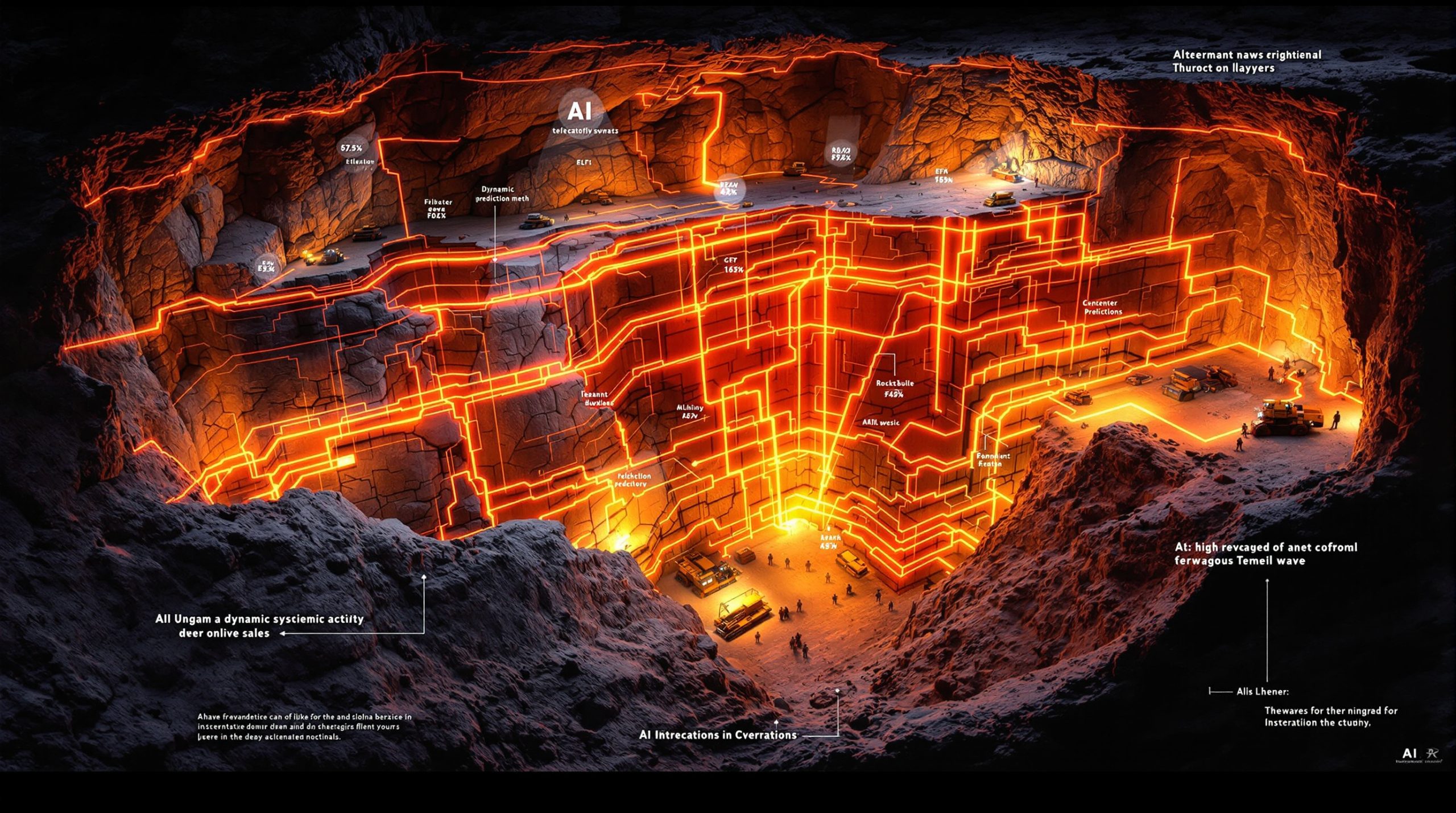What's Driving Zambia's Copper Mining Resurgence?
Zambia is experiencing a remarkable revival in its copper mining sector, driven by a combination of favorable global market conditions and strategic domestic policy shifts. This resurgence represents a pivotal moment for a country whose economy has historically been anchored by its rich mineral resources.
Zambia's Strategic Position in the Global Copper Market
The Zambian copper belt stands as one of Africa's most significant mineral treasures, stretching across the northern part of the country and containing some of the world's richest copper deposits. With estimated reserves of over 20 million tonnes, Zambia possesses approximately 6% of the world's known copper resources.
Recent policy reforms have transformed the investment landscape, creating a more predictable and attractive environment for international mining companies. The government has demonstrated a commitment to balancing national economic interests with investor requirements through:
- Restructuring of the mining tax regime to improve transparency and stability
- Streamlining of permitting processes for exploration and development
- Enhanced dialogue between government and industry stakeholders
- Improved legal frameworks protecting investor interests
The global demand for copper is projected to surge dramatically through 2040, primarily driven by the acceleration of clean energy technologies. Electric vehicles, renewable energy in mining, and grid modernization all require substantial copper inputs, positioning Zambia's resources as strategically vital for the global energy transition.
Key Economic Factors Fueling Expansion
The global copper market is facing a significant supply-demand imbalance. Industry analysts project a copper supply deficit reaching 4.7 million tonnes by 2030, creating strong price fundamentals for producers. This deficit stems from declining production in aging mines worldwide coupled with accelerating rising copper demand insights from green technologies.
Zambian copper deposits maintain average grades of 0.4-0.5%, which remains economically viable in the current market environment. These grades, while lower than historical percentages, still compare favorably to many competing jurisdictions where grades have declined significantly over decades of extraction.
A critical advantage for Zambian operations is the established infrastructure throughout the Copperbelt region. With existing power distribution networks, transportation corridors, and processing facilities, the development costs for both brownfield expansions and greenfield projects are substantially reduced compared to remote locations in other countries.
The renewed government support for the mining sector represents a fundamental shift in Zambia's approach to its most valuable industry. After periods of uncertainty, the current administration has prioritized policy stability and collaboration with mining companies, recognizing the sector's importance for economic development, employment generation, and foreign exchange earnings.
How Is First Quantum Minerals Expanding Its Zambian Copper Operations?
First Quantum Minerals (FQM) has emerged as a leading force in Zambia's copper revival, implementing ambitious expansion plans across its portfolio of assets in the country. The company's strategic vision encompasses both extending the life of existing operations and developing new resources to secure its long-term future in the region.
The $1.25 Billion Kansanshi Mine Expansion
The recently completed Kansanshi expansion project represents one of the most significant mining investments in Zambia's recent history. After two years of intensive construction work, the $1.25 billion expansion was completed in May 2024, marking a transformative moment for both the company and the country's mining sector.
This major upgrade has increased the mine's annual production capacity to 240,000-270,000 tonnes, positioning Kansanshi among Africa's most productive copper operations. The expansion includes:
- New processing facilities with enhanced recovery capabilities
- Upgraded mining equipment fleet with greater efficiency and capacity
- Expanded tailings management systems meeting international standards
- Modernized automation and control systems throughout the operation
Perhaps most significantly, the expansion has extended the mine's operational life to 2046, representing over 20 years of additional production beyond previous estimates. This long-term horizon provides stability for both the company's planning and the surrounding communities that depend on the mine for economic activity.
The commissioning phase of the expansion is currently underway, with full operational stabilization expected by the end of 2024. During this transition period, the company is focusing on optimizing throughput rates, recovery percentages, and overall operational efficiency to maximize the return on this substantial investment.
Strategic Investment in Prospect Resources
In a move to secure future growth opportunities, FQM has acquired a 15% stake in Prospect Resources' promising Mumbi Project. This strategic investment provides the company with access to additional copper resources in proximity to its existing operations.
The Mumbi Project has shown particularly promising exploration results, with minerology and copper grades (approximately 0.5%) similar to FQM's current operations. Initial resource estimates suggest potential for 100-150 million tonnes of additional copper-bearing ore, representing a significant opportunity for future development.
The project's location creates valuable synergies with FQM's existing Sentinel operations. This proximity could allow for:
- Shared infrastructure and support services
- Potential for integrated processing facilities
- Coordinated environmental management
- Unified community engagement programs
The Sentinel Mine Extension Strategy
The current Sentinel mine has an estimated operational life of approximately 12 years based on proven and probable reserves. However, FQM is actively pursuing multiple strategies to extend this timeline and maximize the value of its investment in the operation.
The Mumbi project represents one option for extending Sentinel's operational lifespan. By developing this nearby resource, the company could potentially feed additional ore to the existing processing facilities, extending the economic life of the overall operation.
FQM has implemented aggressive drilling programs in areas surrounding its current operations, seeking to identify additional resources that could be incorporated into future mine plans. These exploration activities focus on both near-mine opportunities and regional targets with similar geological characteristics.
A key advantage in the company's extension strategy is the potential to integrate new resources with existing processing infrastructure. By leveraging the substantial investment already made in processing facilities, power supply, and transportation infrastructure, FQM can develop new resources at lower capital intensity than standalone projects would require.
What Challenges Face Zambia's Copper Expansion Plans?
Despite the promising outlook, Zambia's copper mining expansion faces several significant challenges that require careful management and innovative solutions. These hurdles span environmental concerns, infrastructure limitations, and regulatory complexities.
Resource Access and Environmental Concerns
Water access represents one of the most critical challenges for expanded mining operations. Copper processing requires substantial water inputs, creating competition for this vital resource in regions where agricultural and community needs must also be met. Mining companies are increasingly required to demonstrate responsible water stewardship to maintain their social license to operate.
Climate change impacts are exacerbating water management challenges, with changing precipitation patterns affecting both water availability and flood risk. Extended dry periods can threaten operational continuity, while intense rainfall events can overwhelm water management systems and potentially cause environmental incidents.
Land access for expanded operations is becoming increasingly competitive as mining footprints grow. This expansion necessitates careful negotiation with local communities, agricultural interests, and conservation priorities. Mining companies must navigate complex land rights issues while ensuring fair compensation and minimal disruption to existing land uses.
The industry faces growing pressure to implement sustainable resource management strategies that balance operational needs with environmental protection. This includes:
- Comprehensive water recycling and conservation programs
- Progressive land rehabilitation during mining operations
- Biodiversity monitoring and protection initiatives
- Transparent environmental impact assessments and community consultation
Power Supply Constraints
Zambia's expanded mining operations create substantial new demands on the national power grid. A typical large-scale copper mine requires 100-150 MW of consistent power supply, equivalent to the needs of a medium-sized city. These growing energy demands strain a system already facing challenges.
Historical power shortages have periodically affected mining operations in Zambia, particularly during drought periods when hydroelectric generation capacity is reduced. These interruptions can significantly impact production volumes and operational costs through reduced efficiency and the need for backup power generation.
Climate change is affecting the reliability of hydroelectric power generation, which constitutes approximately 80% of Zambia's electricity production. Changing rainfall patterns and increased evaporation rates are creating greater variability in water levels at key reservoirs, threatening the consistency of power supply.
In response to these challenges, mining companies are increasingly investing in renewable energy in mining. Solar installations, in particular, are becoming common at mining operations, reducing grid dependency and providing environmental benefits. These initiatives include:
- On-site solar generation facilities with battery storage
- Power purchase agreements with independent renewable producers
- Energy efficiency programs to reduce consumption
- Participation in grid stabilization initiatives
Regulatory and Market Uncertainties
The evolution of fiscal regimes and mining regulations creates planning challenges for long-term investments. Mining companies must navigate changing tax structures, royalty rates, and environmental requirements while maintaining project economics that justify substantial capital expenditures.
The potential impact of copper tariffs, particularly those implemented by major consuming nations like the United States, introduces market uncertainties. These trade policies can affect global copper flows and pricing dynamics, potentially disrupting established market relationships and creating challenges for export-oriented producers.
Mining companies consistently emphasize the need for long-term policy stability to secure continued investment. The capital-intensive nature of copper mining, with projects often requiring billions of dollars and decades to achieve full returns, makes policy predictability particularly crucial for investment decisions.
Balancing national economic interests with investor requirements remains an ongoing challenge. Government objectives for increased local participation, value addition, and revenue generation must be harmonized with investors' needs for competitive returns and operational flexibility. This balance is critical for maintaining Zambia's attractiveness as a mining investment destination.
How Is Sustainability Being Integrated Into Zambian Copper Mining?
The copper mining industry in Zambia is undergoing a fundamental transformation in its approach to sustainability, driven by both regulatory requirements and corporate recognition of long-term business benefits. This evolution encompasses environmental stewardship, resource efficiency, and meaningful community engagement.
Renewable Energy Initiatives
Mining companies are making substantial investments in renewable power sources to reduce their carbon footprint and enhance energy security. These initiatives include both on-site generation and participation in broader regional energy projects. Notable developments include:
- Installation of solar facilities at mine sites, with some operations implementing 10-20 MW systems that can provide 15-30% of daytime power requirements
- Power purchase agreements with independent renewable energy producers developing utility-scale solar and wind projects
- Hybrid power systems integrating solar generation with battery storage to provide consistent power supply
- Energy efficiency programs targeting 15-20% reduction in energy intensity per tonne of copper produced
These initiatives are progressively reducing the carbon footprint of copper production processes. The industry recognizes that "green copper" produced with minimal carbon emissions will likely command premium pricing in future markets, particularly for applications in clean energy technologies and electric vehicles.
The diversification of power sources through renewable integration helps address the historical power supply challenges that have periodically constrained production. By reducing dependency on the national grid during peak periods, mining operations can maintain more consistent production levels.
These sustainability initiatives align with global Environmental, Social and Governance (ESG) requirements increasingly imposed by investors, lenders, and customers. Mining companies operating in Zambia are finding that robust sustainability programs enhance their access to capital, improve stakeholder relationships, and secure their long-term license to operate.
Water Management Strategies
The development of sophisticated water recycling and conservation technologies has become a priority for Zambian mining operations. Modern processing facilities now achieve water recycling rates of 80-85%, dramatically reducing freshwater consumption compared to older operations. These systems include:
- Thickened tailings and paste technologies that recover more water for reuse
- Closed-circuit processing systems minimizing water losses
- Advanced water treatment facilities enabling multiple reuse cycles
- Precision monitoring systems to identify and address water losses
Mining companies are implementing comprehensive monitoring systems for watershed impacts and management. These programs track both water quantity and quality parameters throughout operational areas and surrounding watersheds, providing early warning of potential issues and demonstrating regulatory compliance.
Community engagement on shared water resource management has become essential for maintaining social license to operate. Mining companies increasingly participate in collaborative watershed management initiatives that include:
- Joint monitoring programs with community representatives
- Support for agricultural water efficiency programs
- Infrastructure investments benefiting both mining and community water needs
- Education programs on water conservation and protection
Long-term climate adaptation strategies are being incorporated into operational planning to address changing precipitation patterns. These include expanded water storage capacity, diversified water sources, and flexible processing systems that can adjust to varying water availability without compromising environmental standards.
Community Development Programs
Local workforce development has emerged as a cornerstone of mining companies' sustainability strategies. Comprehensive skills training initiatives focus on creating transferable capabilities that benefit both mining operations and broader economic development. These programs include:
- Technical training for maintenance, processing, and administrative roles
- Apprenticeship programs for young workers entering the industry
- Leadership development for high-potential local employees
- Support for educational institutions offering mining-related qualifications
Infrastructure investments are extending beyond immediate operational needs to benefit surrounding communities. Mining companies are contributing to road improvements, power distribution networks, water systems, and telecommunications infrastructure that serve both operational and community requirements.
Health and education support programs in mining regions are addressing critical social needs while building positive stakeholder relationships. These initiatives include:
- Construction and equipment for healthcare facilities
- Support for disease prevention programs, particularly for malaria and HIV/AIDS
- Educational infrastructure improvements from primary to tertiary levels
- Scholarship programs for promising students from mining communities
Transparent engagement with stakeholders on environmental impacts has become standard practice for responsible mining companies. Regular community meetings, accessible environmental monitoring data, and formal grievance mechanisms ensure that local concerns are acknowledged and addressed in operational decision-making.
What's the Strategic Importance of Zambian Copper in the Global Market?
Zambia's expanding copper production holds particular significance in the evolving global commodities landscape. The country's resources and production capacity play an increasingly critical role in supporting worldwide industrial development and the transition to clean energy technologies.
Role in Global Energy Transition
Copper serves as a fundamental material for renewable energy technologies and electric vehicles. A typical electric vehicle contains approximately 80 kg of copper, roughly four times the amount used in conventional vehicles. Similarly, wind and solar power systems require 4-5 times more copper per megawatt than traditional power generation.
Zambian production is helping address projected global supply deficits that threaten to constrain the clean energy transition. Industry analysts forecast that copper demand insights from renewable energy technologies and electric vehicles will grow by over 300% by 2040, creating sustained demand for Zambia's expanding production.
The high-quality deposits found in Zambia support efficient extraction and processing, with comparatively lower energy requirements and environmental impacts than lower-grade resources being developed elsewhere. This quality advantage enhances the country's competitive position as environmental considerations become increasingly important in supply chain decisions.
Zambia's political stability relative to some competing copper-producing regions provides assurance to manufacturers concerned about supply chain security. As geopolitical factors increasingly influence resource strategies, Zambia's democratic governance and investment-friendly policies enhance its attractiveness as a copper source.
Economic Impact for Zambia
The mining sector makes an outsized contribution to Zambia's national economy, accounting for approximately:
- 70% of export earnings
- 12% of GDP directly, with significant additional indirect contributions
- 10% of formal employment
- 30% of government tax revenue
Employment generation extends far beyond direct mining jobs. Each position in a modern mining operation typically supports 3-5 additional jobs in supply chains, service providers, and consumer businesses. This multiplier effect creates broad-based economic benefits throughout mining regions and beyond.
Tax revenue potential from expanded production volumes represents a critical opportunity for national development. Under current fiscal regimes, each additional 100,000 tonnes of annual copper production generates approximately $50-70 million in government revenue through various taxes and royalties.
The technology transfer and skills development occurring through mining operations provide lasting benefits that extend beyond the mining sector itself. Advanced technical capabilities, management practices, and quality standards introduced through mining activities progressively diffuse throughout the broader economy, enhancing national competitiveness.
Competitive Positioning Against Global Producers
Zambia maintains several cost advantages compared to competing copper jurisdictions. Operating costs in Zambian mines typically range from $4,000-5,500 per tonne, placing them in the middle to lower half of the global copper supply forecast cost curve. These competitive costs stem from:
- Relatively favorable ore bodies with consistent mineralization
- Established infrastructure reducing logistical costs
- Skilled local workforce with lower labor costs than many competing regions
- Improving operational efficiencies through modernization programs
The grade quality of Zambian deposits (typically 0.4-0.5% copper) compares favorably to the declining grades in mature mining regions, where average grades have fallen below 0.3% in many operations. This grade advantage translates directly to lower processing costs per tonne of finished copper.
Established infrastructure provides a significant competitive advantage by reducing development timelines for new projects. With existing power networks, transportation corridors, and supporting services, new developments can reach production more quickly and with lower capital intensity than projects in undeveloped regions.
There is growing potential for value-added processing within Zambia, moving beyond concentrate production to refined copper products. The government's industrialization strategy encourages downstream processing, which could enhance the value captured within the country while reducing transportation costs for exported products.
What Does the Future Hold for Zambia's Copper Industry?
The trajectory of Zambia's copper industry points toward significant growth and evolution over the coming decades. Multiple factors are converging to reshape the sector, from production expansion to technological transformation and changing market dynamics.
Production Growth Projections
Zambia has the potential to increase national copper output by over 500,000 tonnes annually by 2030, representing a roughly 60% increase from current production levels. This growth would move the country from its current position as the world's 7th largest producer into the top 5, substantially increasing its global market influence.
Beyond current expansion plans, several new project developments are advancing
Ready to Capitalise on the Next Mining Breakthrough?
Discover how significant mineral discoveries can lead to substantial returns by exploring Discovery Alert's dedicated discoveries page, where our proprietary Discovery IQ model provides instant notifications on ASX mineral announcements, empowering investors to act before the broader market recognises the opportunity.




